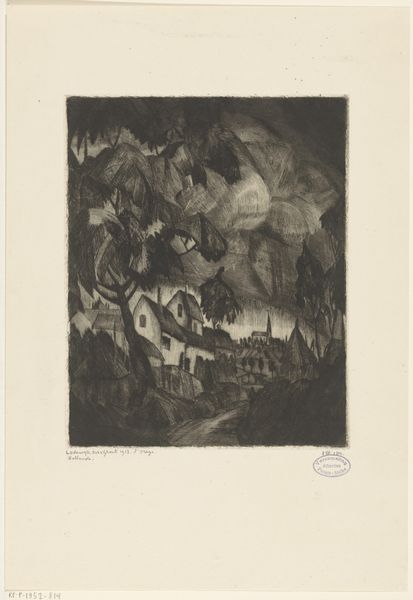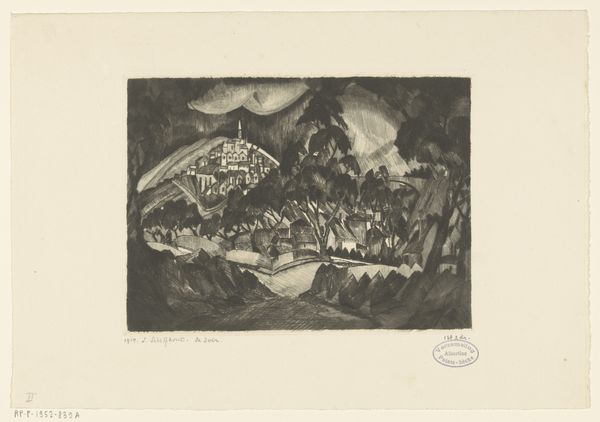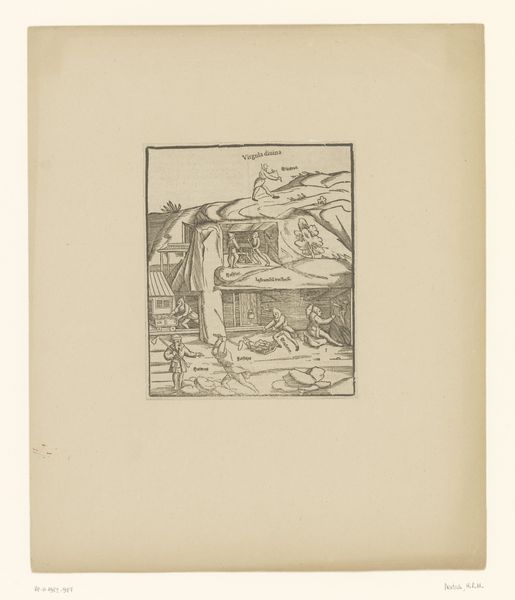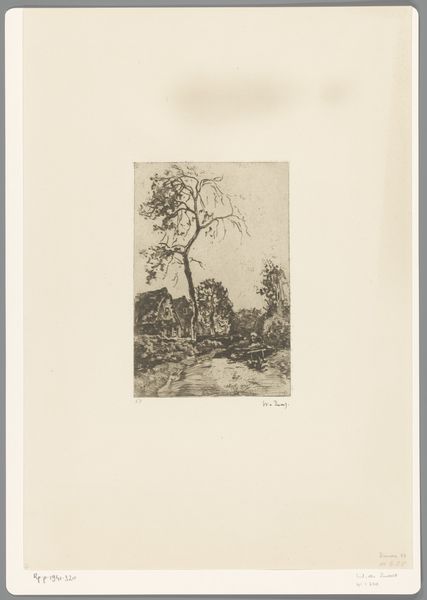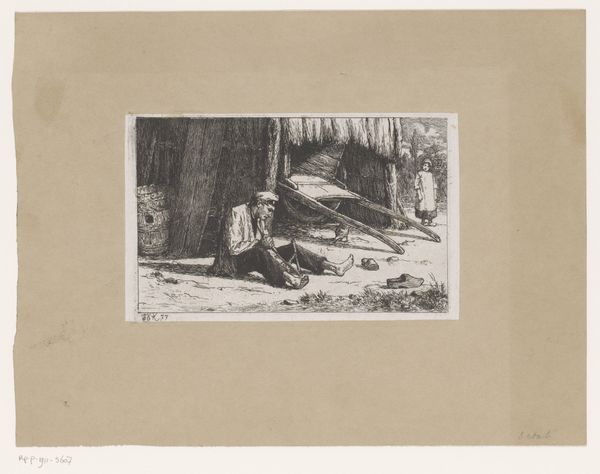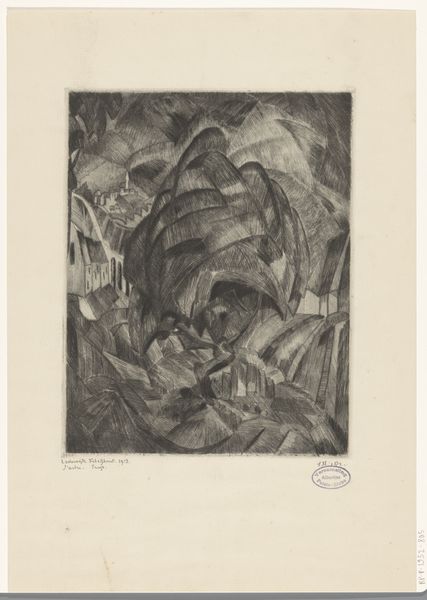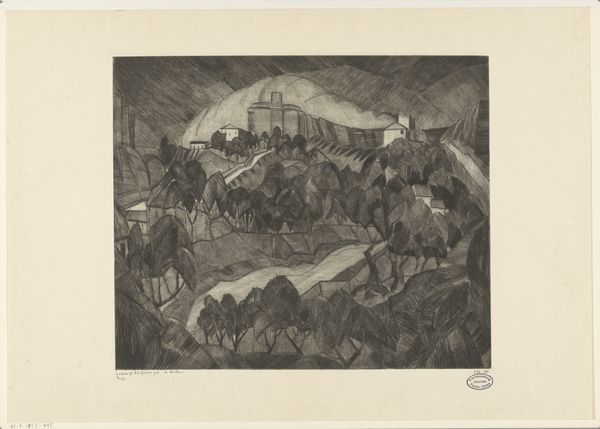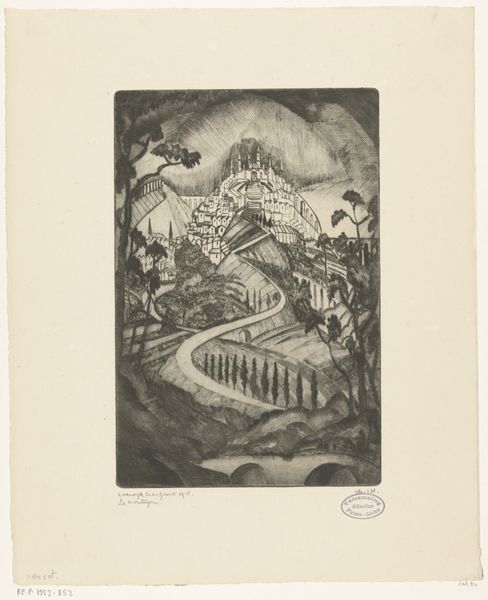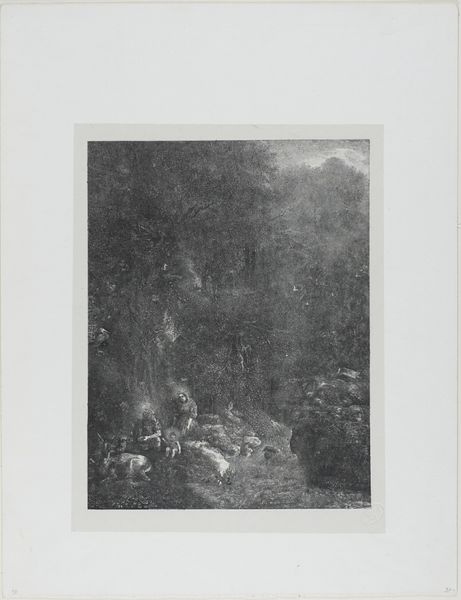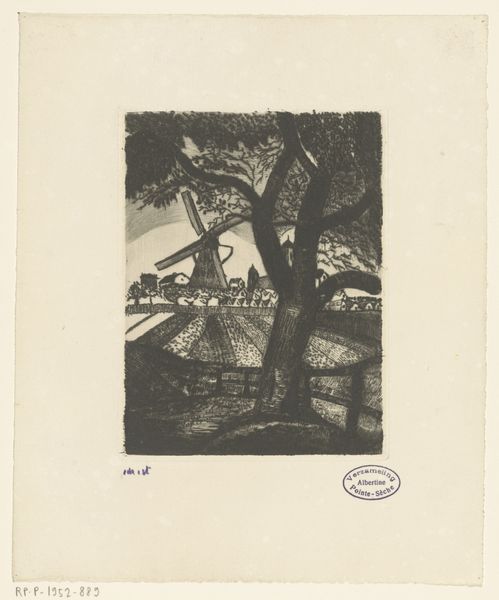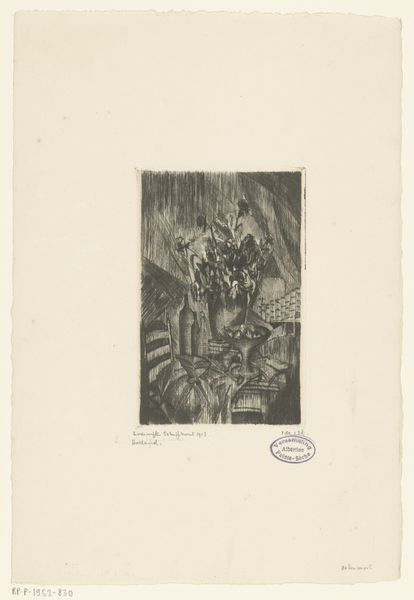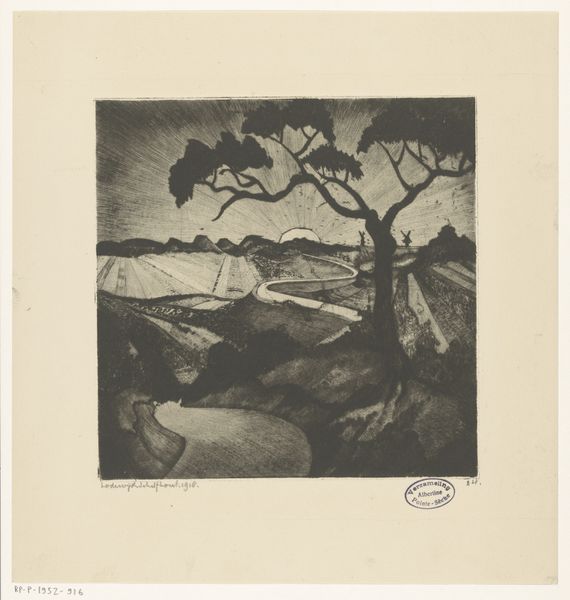
print, etching
# print
#
etching
#
landscape
#
geometric
#
modernism
Dimensions: height 189 mm, width 179 mm
Copyright: Rijks Museum: Open Domain
Curator: This is Lodewijk Schelfhout's "Mountain Landscape with Aqueduct," created in 1912. It's an etching, showcasing a striking mountain scene. Editor: It feels very monumental, almost oppressive. The sharp, dark lines give it this imposing sense of gravity. Curator: Right, etching allowed for these precise, linear marks. Looking at the labor, you see repeated actions leaving physical marks – this wasn't about fleeting beauty; it involved careful and physically demanding work. How might that relate to the subject matter? Editor: The aqueduct reminds me of the exploitation of natural resources—of building infrastructures over land to manipulate nature for utilitarian purposes. In a way, that oppressive feeling you sensed comes across strongly. The geometrization feels aggressive, even masculine. Curator: The "modernism" tag aligns. We're moving beyond Romanticism’s softer appreciation of nature. Also, the repeated arches… notice they are not perfectly uniform, a reminder that things produced by hand inherently lack that machined finish we associate with later industrial production. Editor: Precisely! We can consider what kind of society celebrates this particular form. Perhaps early 20th century sensibilities appreciated infrastructure but simultaneously experienced anxieties related to such heavy manipulation of natural landscapes? Curator: I am not entirely sold, but that's a provocative reading! It prompts us to consider how evolving technology shapes our relationship with the natural world as it's made representable by art. Editor: This etching process allowed Schelfhout to take control. Not only the process to extract metals to build aqueducts, but to manipulate our views and perhaps feelings toward landscapes. I appreciate the geometric repetition that does exactly that, reminding me of our human touch over what we have come to experience as "Nature". Curator: A complex interplay, really. So much tied to materiality. Thanks, I have a lot to consider here. Editor: And thank you, that was a deeply intriguing dive!
Comments
No comments
Be the first to comment and join the conversation on the ultimate creative platform.
